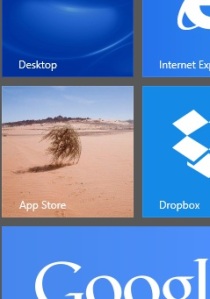When it comes to Xero, there’s a lot of talk about the ‘single ledger’. But what about multiple single ledgers?
 Earlier this year we made the decision to pull back on promoting Xero to our clients while we focussed on bedding our internal systems down. This means to some extent that we haven’t yet promoted the great benefits of Xero as well as we could have. Marketing Xero as a client solution, as opposed to using it internally, has taken something of a back seat.
Earlier this year we made the decision to pull back on promoting Xero to our clients while we focussed on bedding our internal systems down. This means to some extent that we haven’t yet promoted the great benefits of Xero as well as we could have. Marketing Xero as a client solution, as opposed to using it internally, has taken something of a back seat.
But we’ve still been talking about, and implementing, Xero whenever we can. So far the response has been almost all positive, even from those who are either not yet ready or happy with their existing software.
With one exception…
As a practice, we do a lot of larger business enterprises that have a number of entities as a part of their group. If they move to Xero, they need to pay a monthly ledger subscription for each of those entities, and those costs quickly escalate.
If clients are using QuickBooks or MYOB, they pay (at the most) a few hundred dollars a year in upgrade costs to stay with the latest version. For those who don’t use payroll, the upgrades may be needed even less often. The coveted annual tax scales are the prod that compels the goose to continue laying golden eggs for QuickBooks and MYOB. Without them, annual upgrades for these products are often more bloat than benefit.
In return for a single subscription fee, clients get to create as many different accounting entities as they like. This works well for those who have large groups where many of the entities involved actually conduct business. There is no additional cost involved in creating ledgers for extra entities.
To illustrate the difference with Xero, we have a client who has one large trading entity with employees, and a number of other entities that also invoice. We assessed their needs to be:
- 1 x large entity ledger @ $64 per month (because of the many employees)
- 3 x medium entities @ $49 per month (all three of which invoice)
- Total monthly cost = $211
- Total annual cost = $2,532
We’ve had even larger examples, but this one is probably the simplest because the needs here are so absolute. We couldn’t, for example, consider downgrading any of the medium ledgers because every entity had to issue invoices.
This client was already using MYOB for their software and paying their annual subscription, so what we were asking them to commit to with Xero was an increase in annual costs of around $2,000 a year over a competitor product. And we couldn’t even offer them inventory management without the additional cost of an add-on! That makes Xero a pretty tough sell.
We love Xero. We think it has the potential to deliver significant savings to SMEs. But from a client’s perspective, Xero’s competition is really QuickBooks and MYOB. Clients see Xero as SME accounting software, and in terms of feature-set, they’re right. Its main competitive advantages are in providing a single ledger for clients and accountants, and in being accessible anywhere. These are great benefits, and it’s certainly easier to use too, but beyond these distinctions the functionality is similar, and in some cases more limited than the competition (again, inventory, for example). Yet when multiple entities are required, the dollars involved quickly move Xero up to the next level, competing with more expensive modular management accounting suites.
We’ve raised this issue with Xero before, but it’s not something that is high on their list of priorities. To some extent, I get it. If they’re giving away software to accountants, then on the client side they need to make every ledger count. But couldn’t there be a group discount of some kind? In our example above, Xero might lose a thousand dollars or more per annum in making such an offering, but at the moment they’re losing the entire subscription.
Xero may be easier to use. It may deliver efficiency gains. It may be ‘beautiful’. But in the end, for savvy people in business it’s a simple cost-benefit consideration. Sure, Xero is more efficient, but in this case that efficiency comes at a price. If you have to pay a significant premium to move all of your entities over to it, you’re going to have to weigh up those benefits against a very real and substantial cost.
It’s a bit like buying a diesel car. You can’t just say that a diesel is more fuel efficient and therefore better value, because the up-front cost of a diesel is usually much higher than its equivalent petrol counterpart. You have to quantify any potential future savings at the same time as you’re evaluating the cost, and work out how long it will take you to recoup the initial outlay. It may be the case that in many situations you’re better off sticking with petrol.
With Xero, whatever the outcome of that analysis, the up-front costs when multiple entities are involved create a much steeper gradient for larger clients to make the switch. In particular, the comparison is often between real dollars in subscriptions and the mere opportunity cost of a person’s time, who is likely getting paid regardless. Like I said, it can be a tough sell.
So maybe we, as Xero resellers, could absorb some or all of the cost of some client ledgers by bundling up Xero as a part of an overall accounting solution? There’s a problem with this strategy too. Xero dangle a big carrot to entice accountants to switch over their practices to the Xero model – the promise of ‘free’ software. But this future hope is predicated on one significant assumption – that what you make on supplying Xero to clients pays for everything else. If we’re absorbing some of the cost ourselves each time, then the free software objective becomes a whole lot more difficult to achieve.
The solution?
Our suggestion would be that Xero adds another tier above ‘Large’ – let’s call it ‘Enterprise’ for now – that offers a certain number of entities included under the one registration, at a discount to buying each ledger separately.
Ultimately this isn’t about whether Xero delivers value. It’s possible that in the final analysis a large client is still going to be better off. But five or ten times the annual cost for an SME accounting solution represents a pretty big up-front barrier to adoption, even if it is only perception. Perception often is, after all, reality, especially in terms of the impact that it has on buying decisions.
From a firm point of view, we’ve already seen some huge gains with WorkflowMax, and to think that a capable practice management solution can be had at no cost in return for such a small commitment is incredible. There’s still significant value here for an accounting practice. So we’re not complaining about the value for ourselves.
But we’re also trying to document our journey as honestly as possible for those who might be thinking of doing what we are. The value equation for clients with larger groups becomes a lot more difficult to quantify when multiple ledgers are required, and if these clients can’t be won over, this will have an impact on the feasibility of going all-Xero in a practice. Whatever you may hear, Xero isn’t free, and for practices that do a lot of large groups with multiple entities – particularly where those groups are already using QuickBooks or MYOB – the promise of free practice software could well remain a pipe dream.




































